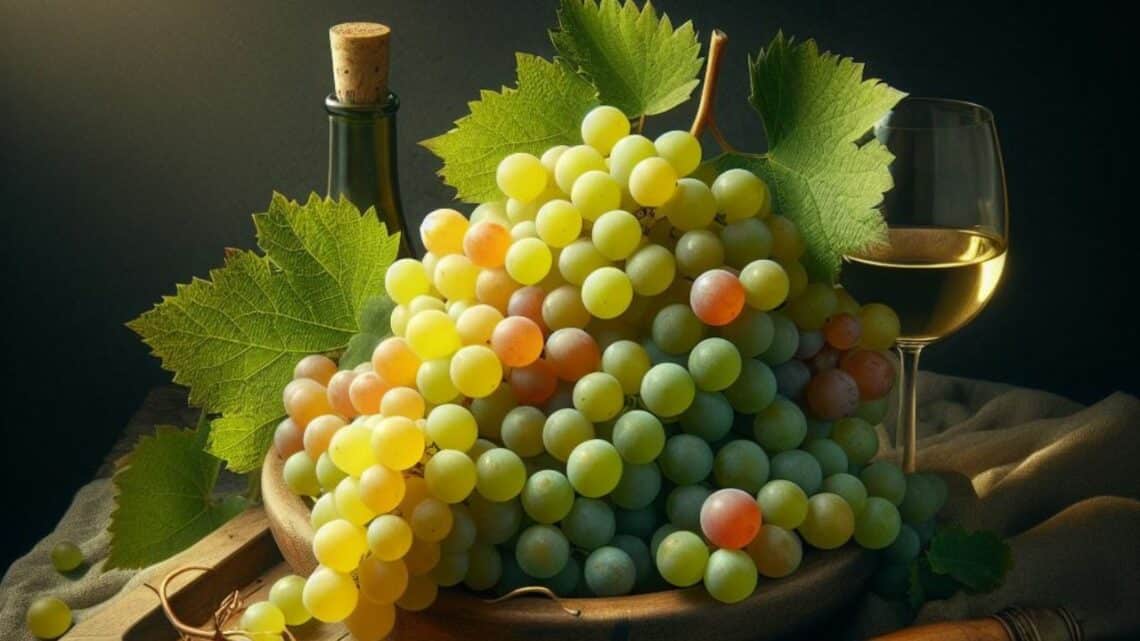
A Beginner’s Guide to Grüner Veltliner from Wachau
Welcome to Wachau, a UNESCO World Heritage Site and the cozy home of Grüner Veltliner, Austria‘s special white wine grape. It’s been chilling in the beautiful Danube Valley for ages, creating wines that go from light and zesty to rich and fancy. They all have this cool mix of lively acidity and tasty fruit flavors.
Grüner Veltliner wines are like the rockstar of Austrian white wines, and Wachau is its happy place. They are famous for being classy, fancy, and can even age like a fine cheese. The secret sauce? The land it grows on—steep vineyards, ancient soils, and breezy Danube vibes.
So, whether you’re a wine aficionado, and new to Grüner Veltliner, or just someone who loves a good sip, this post is for you!
Wachau Grüner Veltliners are known for their exceptional balance of vibrant acidity and rich flavors. They can be enjoyed young and fresh, or aged for years to develop complex aromas and flavors. It can be compared to Riesling or Sauvignon Blanc for the herbaceous flavours.
The Wonders of Wachau – An Overview
Wachau: Vines, Time, Evolution
Back in the day, way before hashtags and smartphones, people started changing the Wachau landscape. Imagine Neolithic folks starting to clear the land. But the real transformation happened around 800 AD. Monasteries from Bavaria and Salzburg stepped in and created the awesome vine terraces we still admire today. They were like the architects of Wachau’s cool slopes.
As time did its thing, the weather played its part, and the wine market did some funky dances. In the 17th century, there were not enough hands for the vineyards, and the 18th century nudged vineyards toward eco-friendly spots. Some areas turned into pastures, shaking up the economic scene.
Fast forward to the 19th century, and Wachau was in for a shake-up. Upper parts ditched growing grapes, and the countryside got a makeover. The vineyards and orchards started playing a market-driven game, giving Wachau its unique charm. The landscape became a mix of history, nature, and a dash of economic strategy.
Picture Wachau as a time machine with vines. Every step, from ancient monks crafting terraces to economic twists, has left its mark. It’s not just a wine region; it’s a story unfolding in every vine and apricot.
The next time you savor a glass from Wachau, remember, you’re sipping a bit of history.
Geology of the Wachau
The steep slopes of the Danube Valley comprise ancient crystalline rocks, encompassing an array of gneiss types, amphibolites, marbles, and quartzites. Further down the hillside, ancient eroded masses of rocks and blocks lie scattered, often veiled by loess.
Near Spitzer Burgberg and Weißenkirchen, you will find remnants of gravel, sand, and clay, which are a testimony of the rivers and marine floods that shaped the areas a million years ago. In short, weathered granite and gneiss dominate the Wachau region, their often fissured nature allowing vine roots to delve deeply into the soil.
Climate of the Wachau
The Wachau climate is influenced by two major forces: the western Atlantic climate and the eastern Pannonian climate. The summers are hot and dry, and the winters are harsh. However, the Danube River helps to moderate the extremes.
The crossing between the hot air from the Pannonian plains and the cold wind from the Weinviertel region leads to significant temperature fluctuations between day and night, particularly during the crucial months leading up to the harvest. This fluctuation contributes to the wines’ refreshing acidity and robust structure.
Rainfall is limited in the Wachau, and the soils are well-drained, meaning water is scarce. This forces the vine roots to dig deep, where they find the moisture they need to thrive. The combination of these climatic factors results in wines that are both elegant and powerful.
The Wachau is a truly unique and special place. Its history, geology, and climate combine to create wines that are truly world-class.
The Legendary Grüner Veltliner Grape
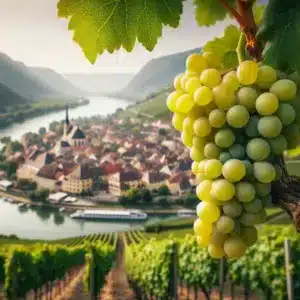
Grüner Veltliner is Austria’s signature grape variety, accounting for over one-third of the country’s total vineyard plantings. It is a versatile grape that can produce wines ranging from dry and crisp to sweet and luscious. Grüner Veltliner wines are typically known for their high acidity, white pepper and citrus fruit flavors, and a long finish.
The Wachau wine region is one of the best places in the world to grow Grüner Veltliner. The region’s steep vine terraces, ancient crystalline soils, and cool climate all contribute to the production of high-quality wines. Wachau Grüner Veltliner wines are typically characterized by their intense minerality, racy acidity, and complex flavor profiles.
The grape’s flavor profile is influenced by a number of factors, including the ripeness of the grapes, the winemaking techniques used, and the terroir. Grüner Veltliner wines made from ripe grapes tend to have more fruit-forward flavors, such as peach, apricot, and pineapple. Wines made from less ripe grapes tend to have more herbal and citrus flavors.
The winemaking techniques used can also have a significant impact on the flavor profile of Grüner Veltliner wines. For example, wines that are fermented in stainless steel tanks tend to have a more crisp and refreshing flavor, while wines that are fermented in oak barrels tend to have a more complex and full-bodied flavor.
The terroir of the Wachau wine region plays a major role in shaping the character of Grüner Veltliner wines from the region. The steep vine terraces force the vine roots to dig deep into the soil, where they find the moisture and nutrients they need to thrive. The ancient crystalline soils provide excellent drainage and impart a minerality to the wines. The cool climate helps to retain the grape’s acidity and freshness.
As a result of these factors, Wachau Grüner Veltliner wines are typically characterized by their intense minerality, racy acidity, and complex flavor profiles. These wines are often described as having flavors of white pepper, citrus fruit, peach, apricot, and pineapple. They can also have herbal and floral aromas. Wachau Grüner Veltliner wines are typically dry, but they can also be made in a sweet style.
If you’re looking for a wine that is both refreshing and complex, then a Wachau Grüner Veltliner is the perfect choice for you. These wines are perfect for pairing with a variety of dishes, including seafood, poultry, and pork.
Discovering Wachau’s Wine Heritage
The Wachau wine region has a long and distinguished history of winemaking, dating back over 1,000 years. The region’s steep vine terraces and ancient crystalline soils have made it ideal for growing grapes, and the Danube River has helped to moderate the climate and provide a transportation route for trade.
There are over 100 different vineyard sites in the Wachau, each with its own unique geology, soil, climate, and topography. This complexity is reflected in the Wachau’s wines, which offer a wide range of flavors and aromas.
The Wachau wine region is a place where tradition and heritage meet to create some of the best wines in Austria.
One way that the Wachau’s winemakers honor their heritage is by using vineyard names to describe their wines. This tradition dates back to the 13th century, and many of the best-known vineyard names in the Wachau can be traced back to that time. Vineyard names are not just about identifying the origin of the grapes; they also describe the character of the wines and the unique terroir of each vineyard.
Many of the region’s wineries have been in business for generations, and they continue to produce wine using traditional methods. This tradition is passed down from one generation to the next, and it ensures that the Wachau’s wines are produced to the highest standards.
Some of the key traditional practices that are still used in the Wachau include:
- Hand-picking grapes: Grapes are still hand-picked in the Wachau, which allows the winemakers to select only the ripest and healthiest grapes.
- Steeping the grapes: The grapes are steeped in their own juices for several days before fermentation, which helps to extract more flavor and character from the grapes.
- Fermentation in large oak barrels: The wines are fermented in large oak barrels, which imparts a subtle oak flavor to the wines.
- Malolactic fermentation: The wines undergo malolactic fermentation, which converts malic acid into lactic acid, resulting in a smoother and rounder wine.
These traditional practices help to produce Wachau wines that are known for their elegance, complexity, and finesse.
Today, the Wachau is home to some of Austria’s most iconic wineries, including Domäne Wachau, Rudi Pichler, F.X. Pichler, and Franz Hirtzberger. Each winery has its own unique approach to winemaking, but all share a commitment to quality and a deep understanding of the Wachau terroir.
If you’re looking for wines that are both delicious and timeless, then the Wachau is the region for you. The Wachau’s winemakers are committed to preserving their traditions and heritage, and they are producing wines that are sure to impress wine lovers of all levels.
Decoding the Wachau Wine Designation Codex Law
The Vinea Wachau Nobilis Districtus (Vinea Wachau for short) is an association of top growers in the Wachau wine region of Austria. The association was founded in 1983 with the goal of maintaining the highest quality standards for Wachau wines.
Vinea Wachau has a number of strict rules that its members must follow. These rules include:
- Only grapes grown in the Wachau wine region can be used to make Vinea Wachau wines.
- The grapes must be hand-picked.
- The wines must be fermented in large oak barrels.
- The wines must undergo malolactic fermentation.
- The wines must be classified into one of three tiers: Steinfeder, Federspiel, or Smaragd.
Vinea Wachau’s Classification System
Vinea Wachau’s classification system is based on the ripeness of the grapes and the alcohol content of the wine.
- Steinfeder: These are light, fresh wines with an alcohol content of 11% to 11.5%. They are named after a local grass, and are meant to be drunk young.
- Federspiel: These wines are equivalent to dry Kabinett, with a minimum alcohol content of 11.5% and a maximum residual sugar content of 12.5 grams per liter. The name refers to a lure used in falconry, a popular sport among the nobility in the Wachau in the past.
- Smaragd: These are the top wines of the Wachau, with an alcohol content of at least 12% and a maximum residual sugar content of 9 grams per liter. The name refers to a lizard that is sometimes seen in the stony vineyards during hot weather.
Vinea Wachau’s Other Rules
In addition to its classification system, Vinea Wachau also imposes a number of other rules on its members, including:
- Prohibiting chaptalization (the addition of sugar to the grape must)
- Prohibiting the use of concentrated must or mechanical concentrators
- Prohibiting the use of wood chips and tannin additions
- Prohibiting alcohol-reducing techniques such as reverse osmosis and spinning cones
- Discouraging malolactic fermentation
Vinea Wachau’s Role in Maintaining Quality
Vinea Wachau plays an important role in maintaining the quality of Wachau wines. The association’s strict rules and quality control measures ensure that only the highest quality wines are released to the market.
Vinea Wachau also promotes sustainable viticulture and invests in research and development to help its members improve their winemaking techniques. The association also educates consumers about the unique terroir of the Wachau and the high quality standards of Vinea Wachau wines.
Winemaking Techniques and Aging Potential
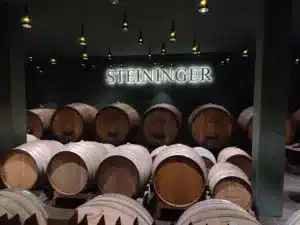
Grüner Veltliner wines from the Wachau are known for their complexity, elegance, and aging potential.
This is due to the grape’s high acidity and natural minerality. The wines can develop complex aromas and flavors over time, including citrus, stone fruit, honey, and toast.
In fact, Grüner Veltliner wines often need five to ten years to fully express their complete potential. At their best, these wines can rival Burgundy wines in terms of complexity and finesse. This was proven in a blind tasting in London, where a Grüner Veltliner wine from the Wachau was ranked higher than several Burgundy wines.
The 1995 Brundlmayer Alte Reben is a prime example of the aging potential of Grüner Veltliner wines from the Wachau. This wine is just now reaching maturity, and it is said to be even better than it was when it was first released. This shows that aging can confer more rewards than initially anticipated, especially for superior Grüner Veltliner wines.
For the more modest Grüner Veltliner wines, such as liter bottlings or those falling within the $20 price range, it is recommended to drink them while young, as aging rarely brings much.
- Steinfeder wines: Steinfeder wines are typically consumed young, but they can be aged for 2-3 years.
- Federspiel wines: Federspiel wines can be aged for 3-5 years.
- Smaragd wines: Smaragd wines have the greatest aging potential and can be aged for 10 years or more.
Wachau winemakers are dedicated to producing high-quality wines that reflect the unique terroir of the region. The use of neutral oak barrels, skin contact, and lees aging are all important techniques that help to create complex and age-worthy Grüner Veltliner wines.
Here are some specific examples of winemaking practices used in the Wachau:
- Neutral oak barrels: Many Wachau winemakers use neutral oak barrels for fermentation and aging. This helps to preserve the purity and fruit character of the Grüner Veltliner grape. Neutral oak barrels are typically used for 2-3 years before being replaced.
- Skin contact: Some Wachau winemakers use skin contact during fermentation. This involves leaving the grape skins in contact with the juice for a period of time, typically 12-24 hours. Skin contact can add additional complexity and structure to the wines.
- Lees aging: Lees (spent yeast cells that remain in the wine after fermentation) aging is a common practice in the Wachau. Lees can help to create a creamier and rounder texture in the wines, as well as add complexity and flavor. Lees aging can last for several months, or even years.
If you are lucky enough to have a bottle of Wachau Grüner Veltliner, I encourage you to cellar it for a few years to allow it to reach its full potential. You will not be disappointed.
Conclusion: A Beginner’s Guide to Grüner Veltliner from Wachau
We’ve talked about the unique terroir and winemaking practices that create these truly special wines. Wachau Grüner Veltliners are known for their exceptional balance of vibrant acidity and rich flavors. They can be enjoyed young and fresh, or aged for years to develop complex aromas and flavors.
Whether you are a seasoned wine lover or just starting to explore the world of wine, I encourage you to explore and taste the unique wines of Wachau. You will not be disappointed.
Here are a few tips to help you get started:
- Look for wines from the Smaragd classification. These wines are made from the ripest grapes and have the greatest aging potential.
- Try pairing Wachau Grüner Veltliners with a variety of foods. These wines are versatile enough to pair with everything from seafood to pork to chicken.
- If you are cellaring your Wachau Grüner Veltliners, be sure to store them in a cool, dark place.
Wachau Grüner Veltliners are truly special wines that offer something for everyone. With their exceptional balance of vibrant acidity and rich flavors, these wines are sure to tantalize your taste buds and leave you wanting more!
Explore the world of Wachau Grüner Veltliners today!




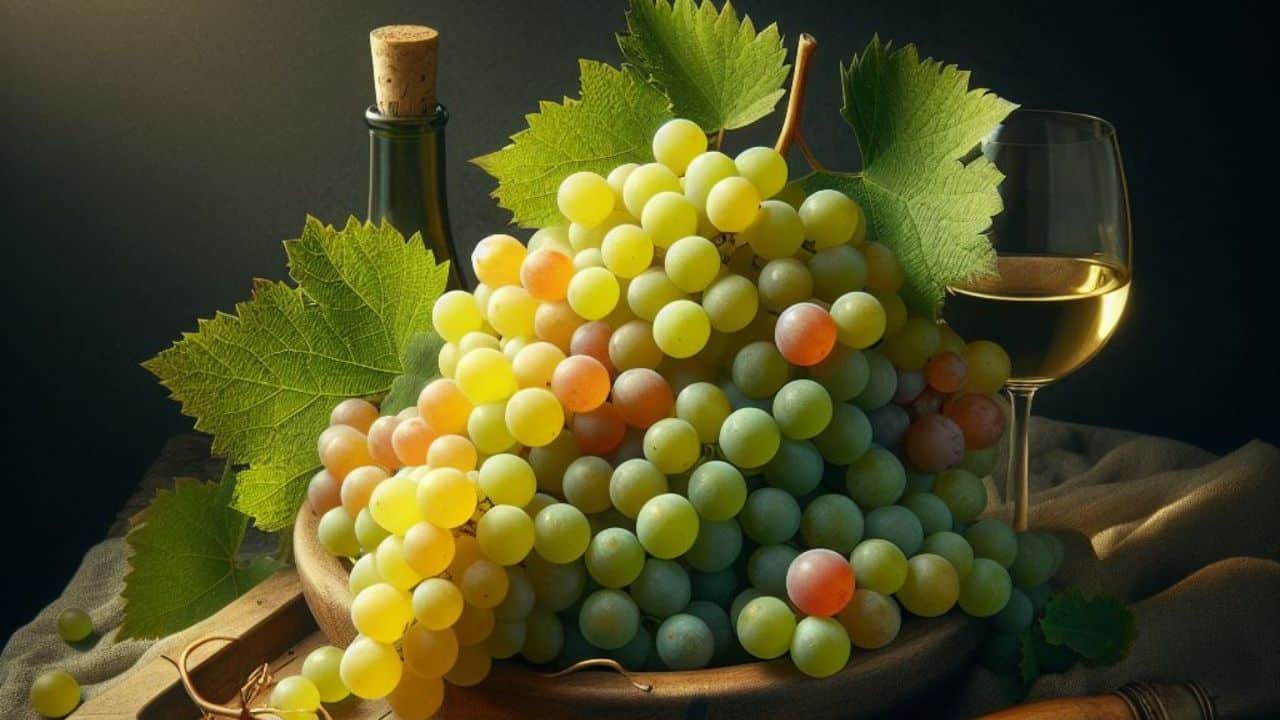
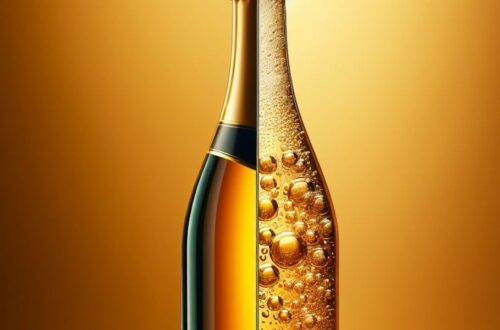
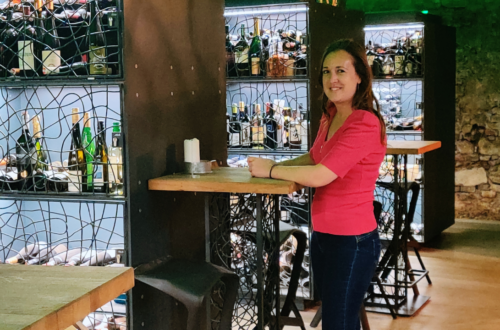
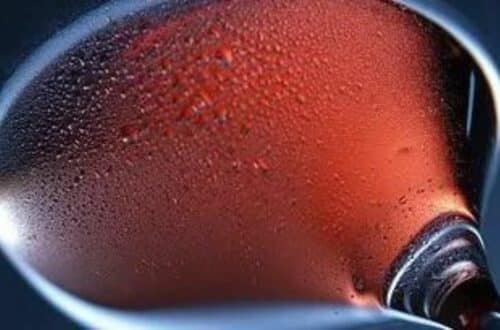
2 Comments
Franck MULARD
Thanks. Very helpful!
Mademoiselle
you’re welcome Franck! More articles are coming up for you to broaden your knowledge on Grüner Veltliner!